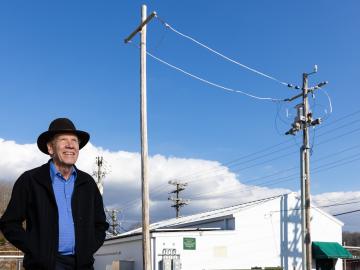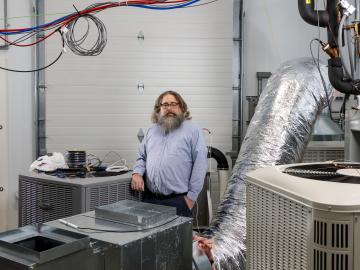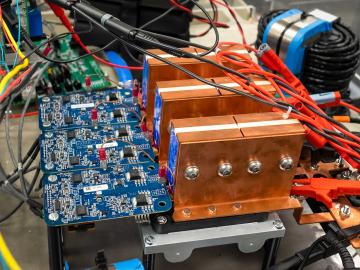
Filter News
Area of Research
- (-) Energy Science (71)
- (-) Quantum information Science (2)
- Biology and Environment (18)
- Energy Frontier Research Centers (1)
- Fusion and Fission (6)
- Isotope Development and Production (1)
- Isotopes (3)
- Materials (56)
- Materials for Computing (13)
- National Security (13)
- Neutron Science (15)
- Nuclear Science and Technology (3)
- Sensors and Controls (1)
- Supercomputing (27)
News Type
News Topics
- (-) Buildings (19)
- (-) Microscopy (7)
- (-) Nanotechnology (8)
- (-) Polymers (6)
- (-) Security (6)
- (-) Space Exploration (1)
- (-) Transportation (34)
- 3-D Printing/Advanced Manufacturing (51)
- Advanced Reactors (5)
- Artificial Intelligence (6)
- Big Data (1)
- Bioenergy (24)
- Biology (9)
- Biomedical (5)
- Biotechnology (3)
- Chemical Sciences (13)
- Clean Water (4)
- Composites (7)
- Computer Science (18)
- Coronavirus (9)
- Critical Materials (4)
- Cybersecurity (9)
- Energy Storage (46)
- Environment (31)
- Exascale Computing (2)
- Fossil Energy (2)
- Frontier (1)
- Fusion (1)
- Grid (22)
- High-Performance Computing (4)
- Hydropower (1)
- Isotopes (1)
- Machine Learning (4)
- Materials (22)
- Materials Science (15)
- Mathematics (1)
- Mercury (2)
- Microelectronics (1)
- Molten Salt (1)
- National Security (5)
- Neutron Science (9)
- Nuclear Energy (6)
- Partnerships (12)
- Physics (1)
- Quantum Science (6)
- Simulation (2)
- Summit (4)
Media Contacts

ORNL, TVA and TNECD were recognized by the Federal Laboratory Consortium for their impactful partnership that resulted in a record $2.3 billion investment by Ultium Cells, a General Motors and LG Energy Solution joint venture, to build a battery cell manufacturing plant in Spring Hill, Tennessee.

Bruce Warmack has been fascinated by science since his mother finally let him have a chemistry set at the age of nine. He’d been pestering her for one since he was six.

When Brian Fricke walks into a supermarket, evidence of his scientific achievement is all around in the refrigerated cases housing the fresh fruits and vegetables. As an Oak Ridge National Laboratory building equipment researcher, Fricke has a long history of making sure that produce is kept fresh in an energy efficient and environmentally sound manner.

Burak Ozpineci started out at ORNL working on a novel project: introducing silicon carbide into power electronics for more efficient electric vehicles. Twenty years later, the car he drives contains those same components.

Oak Ridge National Laboratory has released the federal government’s new 2022 Fuel Economy Guide. The report provides the latest fuel efficiency stats and money-saving tips for new and used vehicles.

Ten scientists from the Department of Energy’s Oak Ridge National Laboratory are among the world’s most highly cited researchers, according to a bibliometric analysis conducted by the scientific publication analytics firm Clarivate.

Researchers at ORNL designed a novel polymer to bind and strengthen silica sand for binder jet additive manufacturing, a 3D-printing method used by industries for prototyping and part production.

ORNL has licensed its wireless charging technology for electric vehicles to Brooklyn-based HEVO. The system provides the world’s highest power levels in the smallest package and could one day enable electric vehicles to be charged as they are driven at highway speeds.

As the United States transitions to clean energy, the country has an ambitious goal: cut carbon dioxide emissions in half by the year 2030, if not before. One of the solutions to help meet this challenge is found at ORNL as part of the Better Plants Program.

A new tool that simulates the energy profile of every building in America will give homeowners, utilities and companies a quick way to determine energy use and cost-effective retrofits that can reduce energy and carbon emissions.


